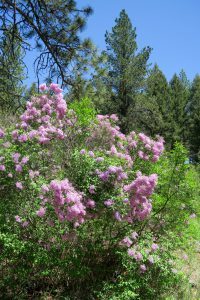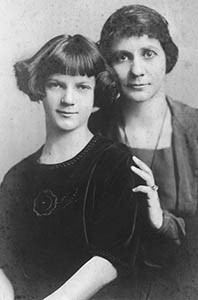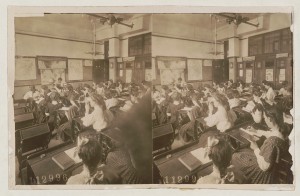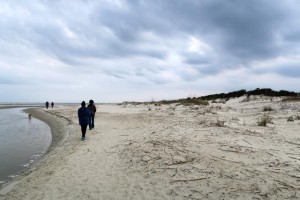Jeanette Ingold's Blog
June 7, 2017
Lilacs in the Woods? Ask Why!

Lilacs blooming in a Montana forest tell of a house that once stood nearby.
This lilac bush turned a family hike through the woods into a find-the-clues game of discovery.
Lilacs are not native to Montana. If you find one growing in the wild you can be sure it was put there, on purpose.
Perhaps by a long-ago homesteader who planted it outside a home that’s since vanished?
What stories lie behind it?

The broken concrete of a doorsill is the most visible part of a foundation filled in and mostl...
February 23, 2016
Not Forgetting Food!

This 1933 photo of the CCC’s Camp Temecula is one of many available from the Franklin D. Roosevelt Museum and Library. The library’s Franklin database of public domain images is a great resource for someone wanting a look at the 1930s and more.
Food. Fuel, pleasure, and sometime one more key helpful in unlocking a character’s life.
Writing Hitch, I’d have missed something important if I hadn’t considered it. This is a story set during the hungry years of the Great Depression, and for young me...
February 7, 2016
The Key to One Character Was a Sewing Basket

I love the hand-stitched detail in the dress my mother’s wearing in this portrait of her and her mother.
The key into a character can be as simple as a sewing basket that goes unnoticed until something causes me to remember why I’ve kept it. It belonged to my mother. Her mother made it.
Memories flood in—hours in fabric departments. Mom laying out a pattern. Cutting, matching notches, pinning, fitting. Machine stitching. Marking the hem—Stand still! Finishing and pressing. Here! Try it on! Wh...
January 27, 2016
For Photo Surprises, the Picture This Blog

A stereoscope brings the world to 3D life for students in this geography class. (Library of Congress Prints and Photographs Division photo copyrighted in 1908 by Underwood & Underwood)
Returning to resources — the Library of CongressPicture This Blogbrings wonderful surprises, as well as researching inspiration. A recent post by LOC librarian Kristi Finefieldexplains how details in thisphoto led her to discover what a1908 student wasdoing—using stereo images to study geography—and to find the...
December 17, 2015
Plan for More

Will Eisner was one of many artists who produced World War II posters for the Office of War Information. You can find more in National Archives collections: http://1.usa.gov/1NVmhcg
I should hang a copy of this poster above my desk.
One thing I’ve learned—but still have to tell myself at the start of every book—is not to hold back against the day I’ll be writing something else.
It’s especially hard to do when I’m finding my way into a project like HITCH, gathering information and deciding wha...
December 13, 2015
Using Photos for a Jump-Start

Heavy black clouds of dust rising over the Texas Panhandle, photographed by Arthur Rothstein in 1936. (Library of Congress, Prints & Photographs Division, FSA/OWI Collection)
I begin writing by looking.
Every book comes with its own set of possibilities and problems. The right format must be found. Fiction must be reconciled with sometimes pesky fact.
Elusive characters must be brought to life, and there is no one single best way to do that. More often than not, though, for me it’s a visual p...
December 8, 2015
Writing HITCH, a Look Behind the Scenes

In preparing for a recent visit to a University of Montana young adult literature class I dug into boxed-up files to find material that might add value their reading of Hitch. That’s my historical novel about the Great Depression, the Civilian Conservation Corps, and a boy who became a man through hard work.
I’d squirreled away photographs, research notes, copies of old newspaper articles, and quotes from memoirs. Printouts of my first efforts to find my way into character and plot. And draf...
July 17, 2015
Smokejumpers Celebrate 75 Years

Parachute loft at Smokejumper Center, Missoula MT
Great video of early training: http://bit.ly/1Mwsl7H
Seventy-five years ago this monthEarl Cooley and Rufus Robinson parachuted onto an Idaho wildfire, put it out, and then hiked 28 miles to the nearest ranger station. It was the U.S. Forest Service’s first “live” jump.
Today more than 270 smokejumpers respond to fires in remote areas, relying on tools, food and water that are dropped to them by parachute. Without their hard work—in the field...
May 19, 2015
Remembering the Fires of 1910

Smoke coloring an evening sky tells of wildfire on the move.
During a bad fire season in the mountain West, smoke, especially the smell of it, is a constant presence. Sometimes you forget, but all you have to do is step outside, trade house air for what lies beyond your door, and awareness comes rushing back.
The wildfires of 1910 were terrible. Millions of acres burned. Towns were destroyed. Close to a hundred people were killed, most of them firefighters caught on the mountainsides and in t...
February 16, 2015
Notes from St. Simons

St. Simons Island, Georgia
On a February writers’ retreat, an afternoon walk along the water quickly becomes as much a part of the day as coffee and writing. Fresh and inspiring, comfortingly familiar, promising surprise.



